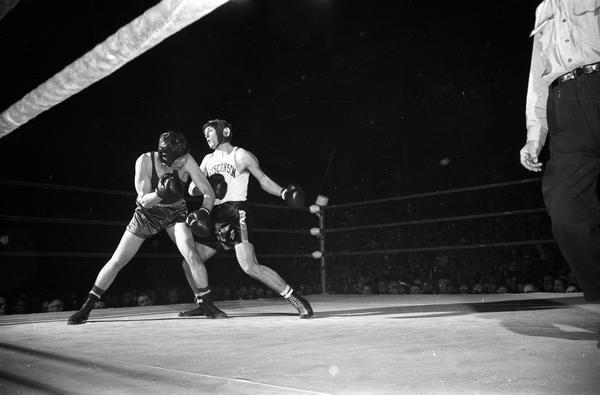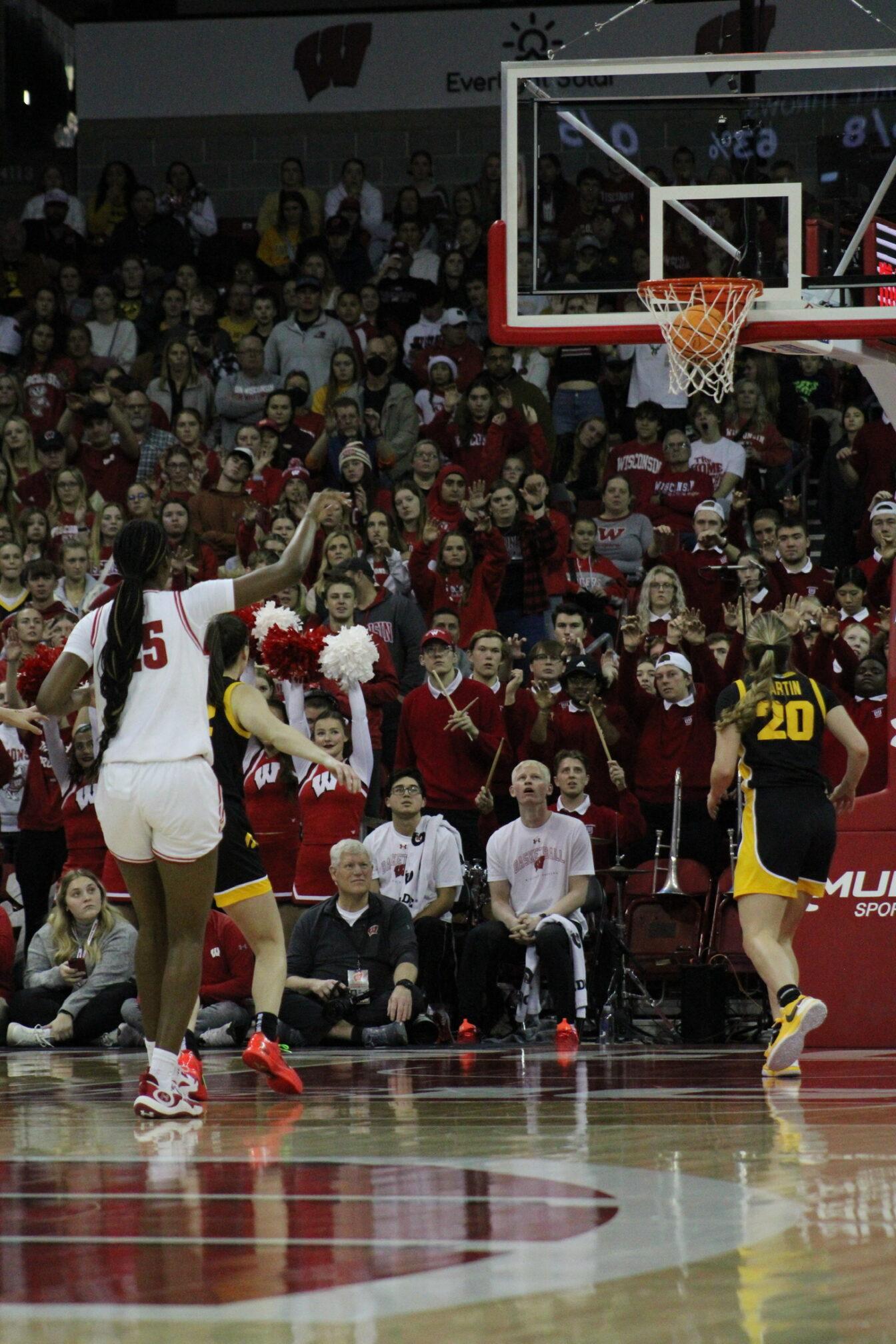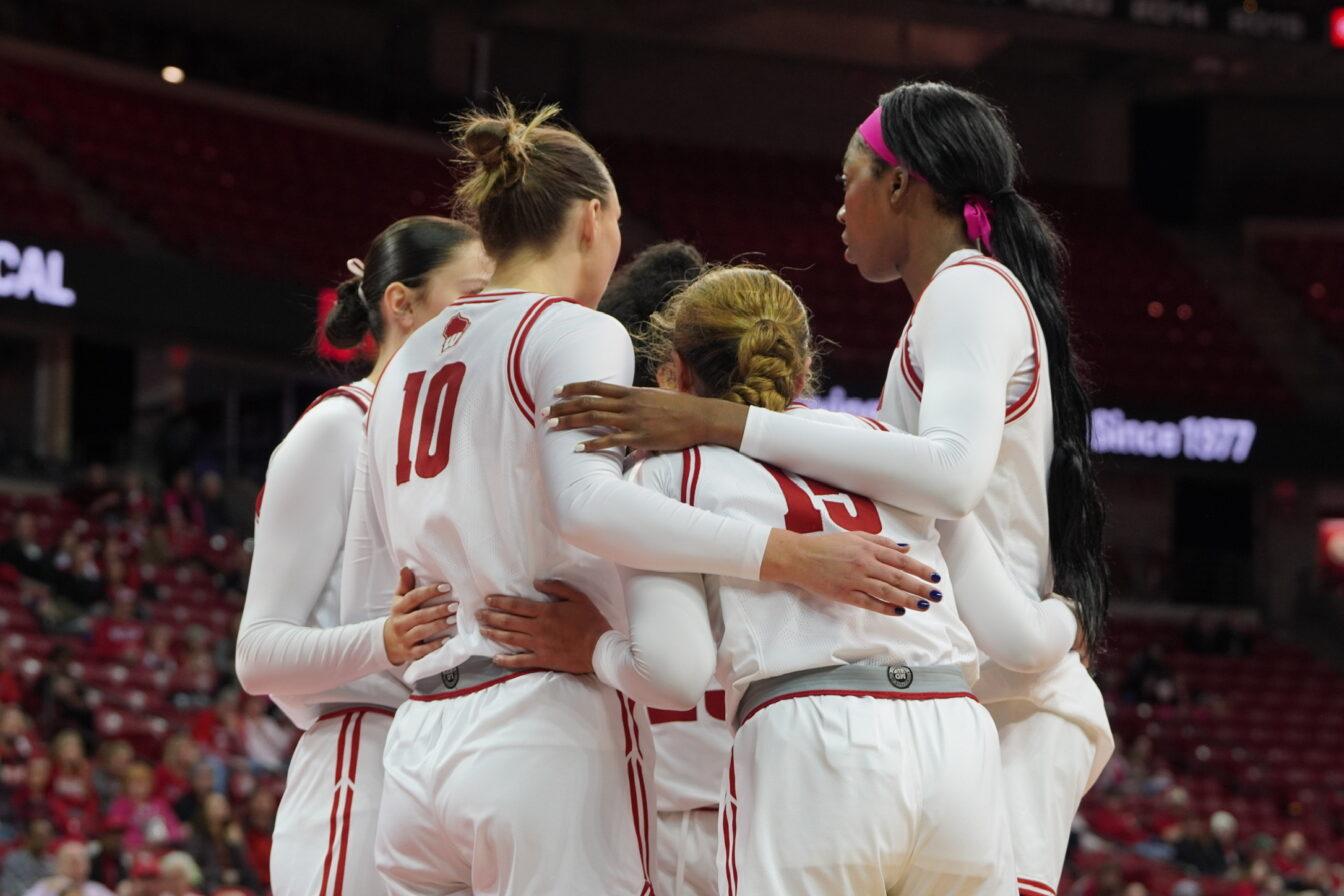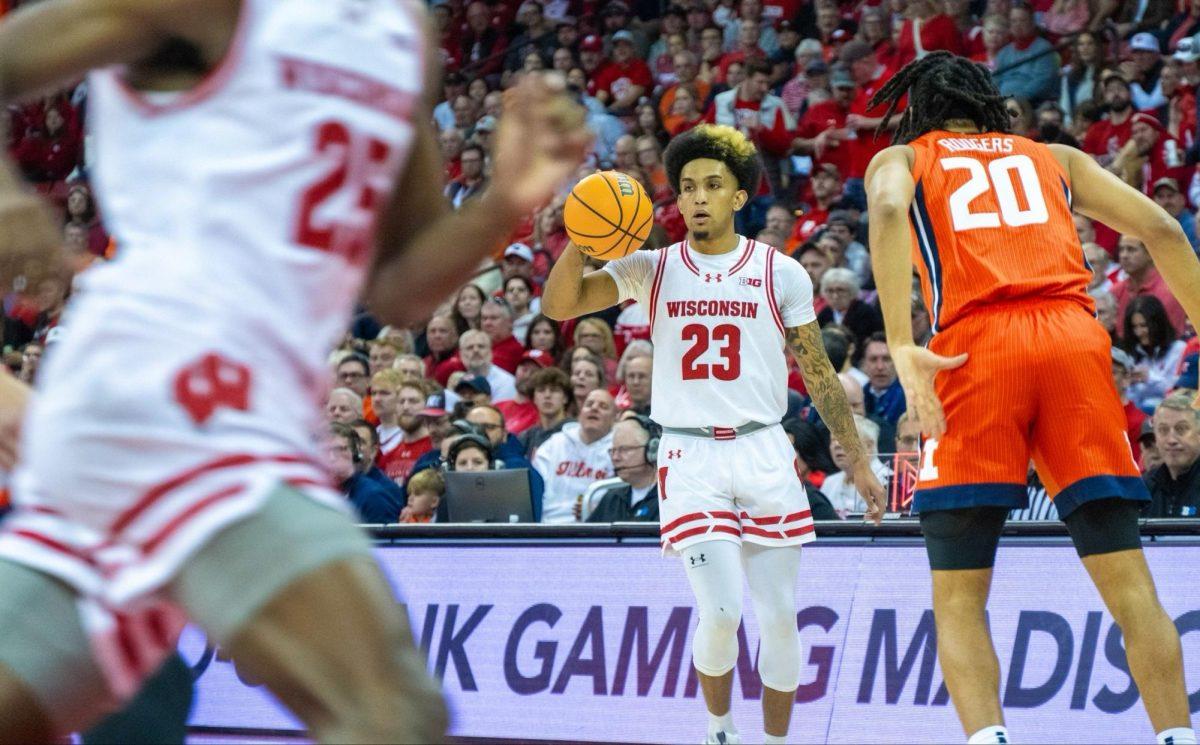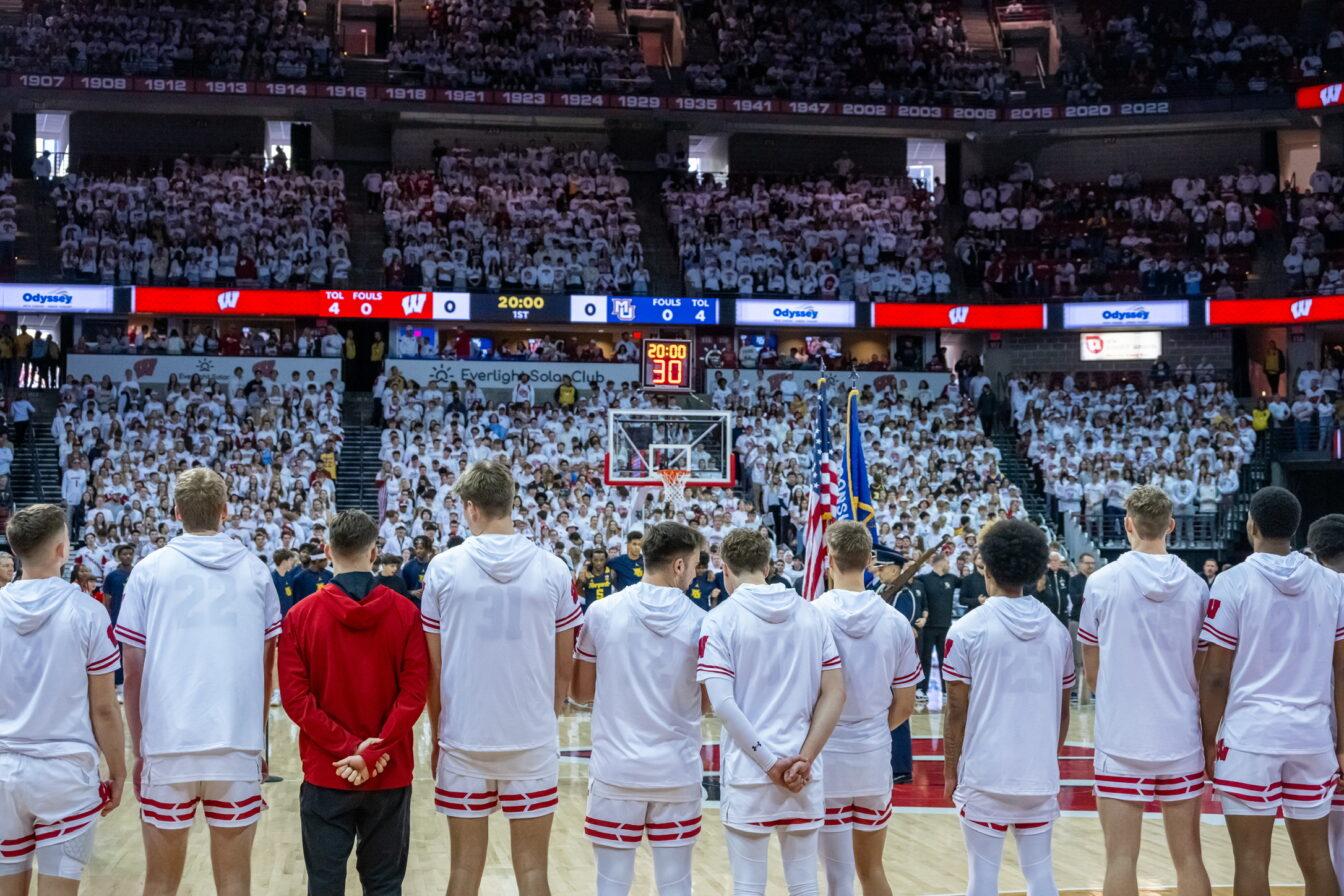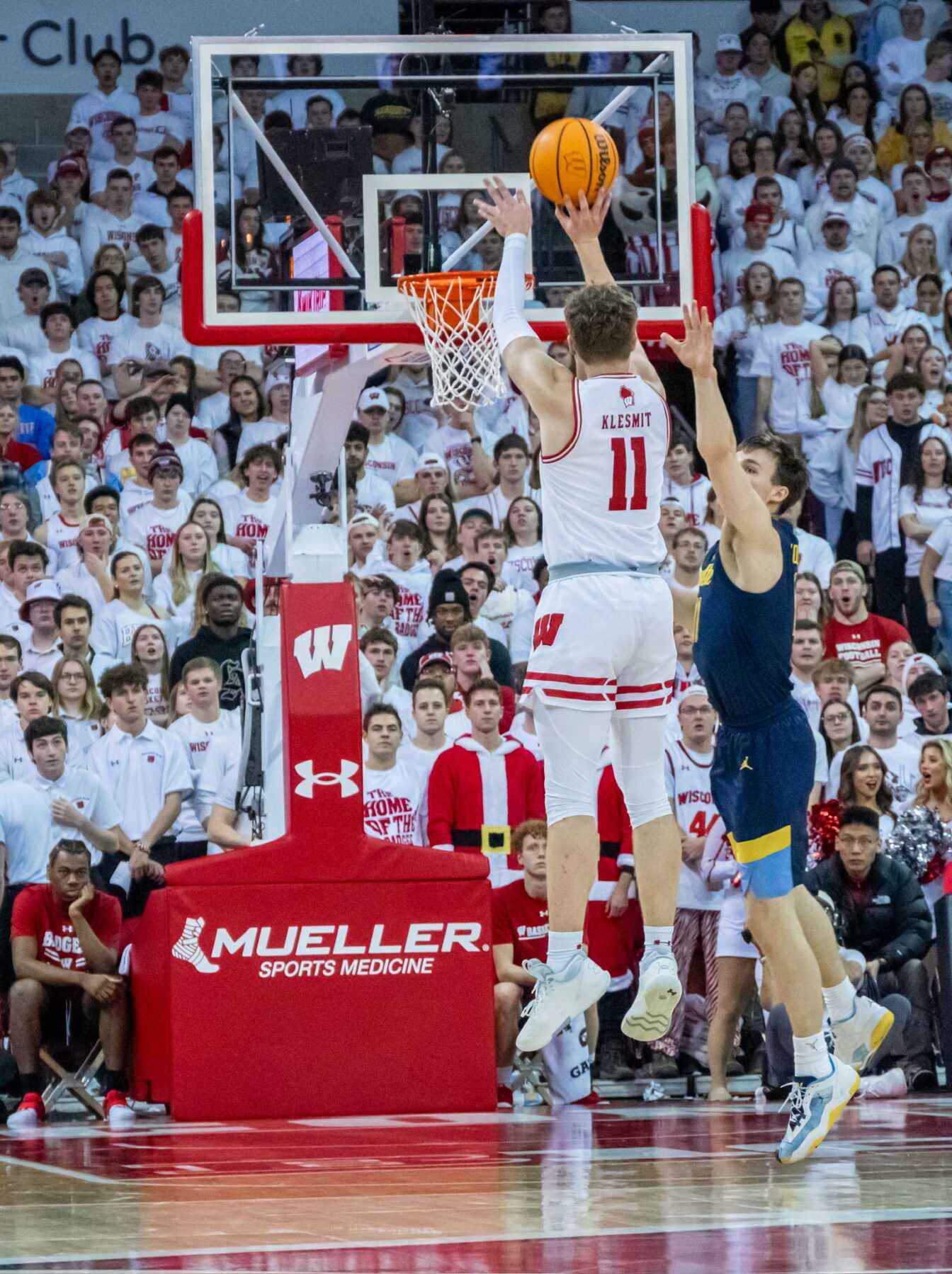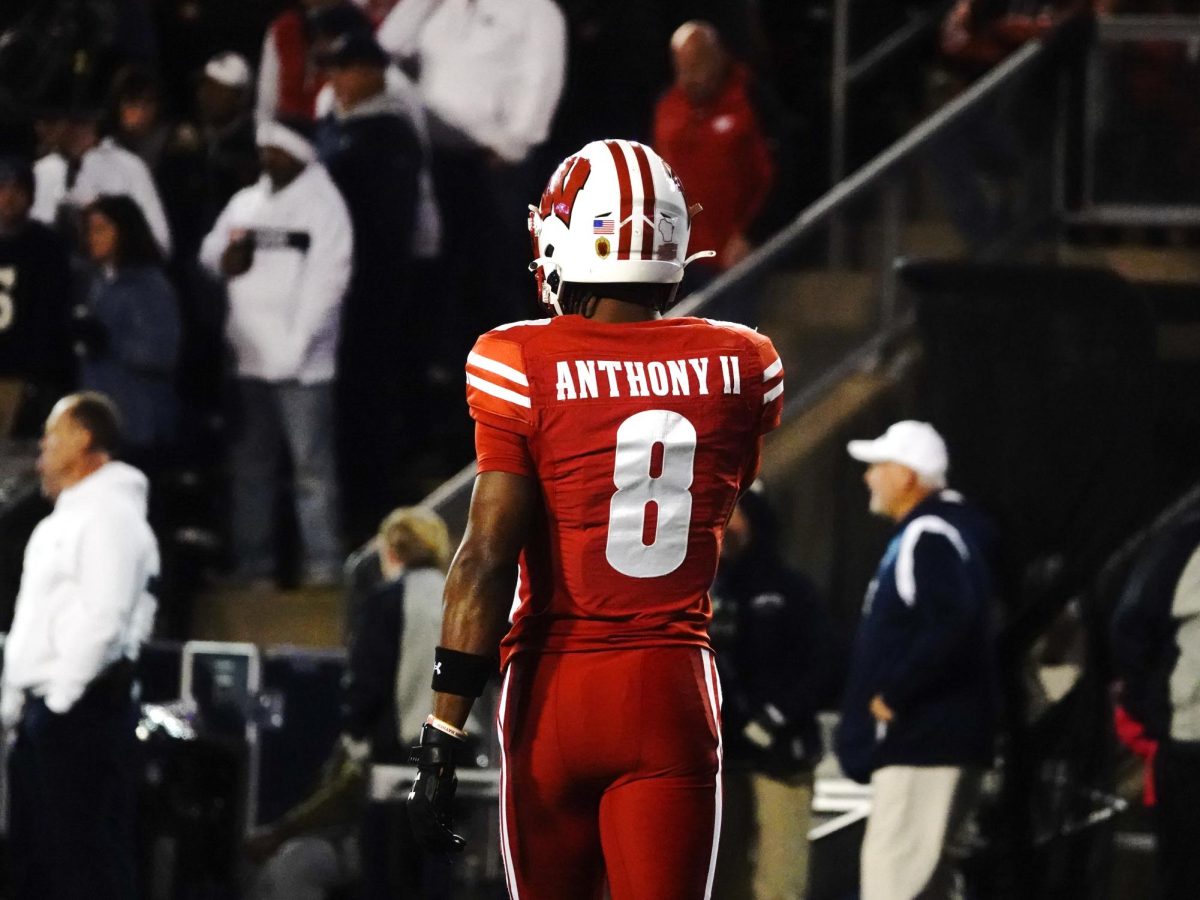On a lucky occasion, wandering into the Field House after hours can render a surreal exposure. With dimmed lights and a faint reflection from the hardwood floors, the old gym almost seems false, an apparition, a sight linked in limbo of a storied past and a still-used future.
Maybe it’s in those moments; if you listen hard enough, the roars from April 9, 1960, still echo. A day where the championship banners of the Wisconsin boxing program didn’t seem so out of place in a place affectionately called the “old barn.” A day where the fate of two legends would be decided in a matter of minutes.
Simply the best
There was never a program that came close to the clout of the Badgers in the arena of intercollegiate boxing. Boxing at Wisconsin started out in April of 1920 with something called an “all university” boxing tournament. It featured student-boxers – and prominently, student-boxers who had been trained and exposed to boxing during the training regimens in the army during World War II – in six weight divisions vying to be named champion and was housed in a building that still stands as iconic as ever on campus: the Red Gym.
The event became so popular that it eventually had to be moved from the Red Gym – where 1,800 spectators had been in attendance for the 1929 finals – to the UW Stock Pavilion in 1930. That same year the tournament drew 8,000 fans for the finals. Finally, in 1931, the Field House was completed. Soon after, UW publicity director George Downer secured the new building for the 1931 tourney.
Just a few short years after the move, Wisconsin took the leap from amateur/intramural to official intercollegiate boxing in April of 1933, when it welcomed St. Thomas College of St. Paul, Minn., to the Field House. The match ended in a 4-4 draw, but the most noticeable result of the match came from who was in attendance.
Coaching and boxing for St. Thomas was a 21-year-old and Minnesota native by the name of John Walsh. Watching in the crowd, Downer saw a man he believed could lead Wisconsin boxing to the upper echelon. Originally planning to attend law school at St. Thomas, Walsh accepted the job upon learning St. Thomas was dropping its law program, opting to coach the Badgers and attend law school at UW.
The results speak for themselves as Walsh went from youngster to the greatest college boxing coach of all time. Wisconsin won five team championships under his guidance and went unbeaten and untied nine different seasons. In fact, Walsh was such a dominant coach that the unofficial champion trophy of college boxing was named after him in 1948, the year Wisconsin hosted the NCAA tournament.
The sport of violence
College boxing matches featured three two-minute rounds where the boxers would don headgear and larger gloves than the professional prizefighters. Still, critics saw boxing as a sport whose sole object was to hurt the opponent and that any risk of brain injury outweighed the benefits of the sport. Too barbaric, the critics said, for a prestigious school to be associated with, as reports of boxers suffering “punch-drunkenness” surfaced.
That criticism looked to have some measurable weight. According to author Martin Kane in an article entitled “You Can Blame it on the Moms” appearing in the March 30, 1959, issue of Sports Illustrated, in 1948 there were 55 colleges playing intercollegiate bouts. However, by 1952, just 29 teams remained with more on the verge of disintegrating.
“People have a visceral reaction against boxing,” author and Wisconsin State Journal columnist Doug Moe said. Moe wrote the definitive history of Wisconsin boxing in his book “Lords of the Ring: The Triumph and Tragedy of College Boxing’s Greatest Team.” “College professors maybe more than most for other reasons. There were discussions whether this was a good activity for prestigious universities to be engaged in. Certainly the boxing people here in Madison had a lot of support and belief among themselves that the sport built character to use a clich?, and was more than a worthwhile activity but they were losing ground because colleges were dropping it. Big boxing schools were getting out of it so the writing may have been on the wall.”
A study released by two doctors working for the New York State Athletic Commission in 1959, Harry Kaplan and Jefferson Browder, said there was no evidence in their study of 1,403 professional boxers using electroencephalograms that a blow to the head by a padded glove “rarely produces cerebral changes demonstrable by any test that we have at the present time.” They also went on to disagree with what they called a common medical opinion, saying there was no evidence to support the idea that a knockout in boxing caused multiple “pinpoint” hemorrhages in the brain.
Wisconsin continued on as signs that the sport was in decline swirled around them, even producing a champion in the NCAA meet the same year. That boxer was a 165-pound fighter named Charlie Mohr.
The boxing altar boy
Charlie Mohr was – by all accounts ever describing the young man – one of the University of Wisconsin’s finest specimens. Described as “the saint with boxing gloves,” Mohr first learned how to box when he was 10. Working a paper route, Mohr met a man doing roadwork named Dick McNally. McNally, who was a standout amateur boxer, ended up eventually introducing Mohr to a gym on Long Island that featured a boxing ring on the first floor.
One of the first descriptions of Mohr fighting came from a future Wisconsin teammate, Pete Spanakos. The fight occurred in the Red Hook section of Brooklyn, when a neighborhood tough guy, Jackie Allen, picked then-ninth grade Mohr out of a crowd to fight. Surprising Spanakos – who had seen Mohr once before at the Madison Square Boys Club in Manhattan wearing thick glasses and sitting on a bench reading a book – the southpaw Mohr boxed circles around his opponent. Despite lacking what Spanakos called the “killer instinct,” Mohr would gracefully beat on his opponents like it was a duel. He looked not to finish his opponents violently but simply to beat them, telling Spanakos, according to an article by Jim Doherty in the Smithsonian, “he didn’t want to hurt anybody.”
That was just part of the gentle nature of Mohr. A devout Catholic who would serve as altar boy at multiple Sunday masses, Mohr was a quiet, shy and very polite by all accounts. But, no doubt about it, he could box with the best of them.
After successful amateur careers, both Spanakos and Mohr were given scholarships to box for the Badgers. Mohr quickly developed the same reputation that he had previously and became one of the most popular athletes on campus.
Several stories have been reported and retold about Mohr’s kindness, but one of the better ones is when he invited a panhandler he met during the team’s travel to San Francisco to dine with him. Mohr was that guy, loved by all and revered as the best and successful at his craft.
In 1959, Mohr was the only Wisconsin boxer to capture an individual NCAA championship, doing so at 165-pounds. On top of the world and a champion, Mohr would find himself with the same opportunity just a year later.
The last fight
Mohr was not without his own personal ghosts, regardless of widely held public perception. An article written by Elliot Maraniss in The Capital Times the week after the 1960 NCAA tournament revealed that Mohr had been a patient in 1959 or early 1960 of the psychiatric department of the University Hospital and the psychiatric unit of St. Mary’s Hospital in Madison.
According to Doherty’s article, Mohr suffered from a nervous disorder that required electroshock therapy more than once. His teammates and friends said he was never right after the treatments.
Mohr also decided not to participate in the 1959 Pan-American Game trials in Madison, something he had once dreamed of doing. It was there that Madison was exposed to a young, brash boxer named Cassius Clay, who would lose in the finals of the trials – the last loss the legend would suffer until facing Joe Frazier. When asked why he didn’t participate by Spanakos, Mohr said that his heart wasn’t in it anymore.
Still, like a true fighter, Mohr pressed on, afraid to let his coaches and teammates down and still living a life of selflessness. According to Doherty’s article, all signs pointed to the NCAA finals being Mohr’s last boxing match of his career.
The date was April 9, 1960. The final match on the bill of the NCAA championship at the Field House in Madison. The team championship would be determined in a single match: Wisconsin’s Mohr versus San Jose State boxer Stu Bartell.
The two had fought twice during the season, splitting the pair of matches. But Mohr had won just a week earlier of Bartell and he was, after all, the reigning NCAA champion. According to Doug Moe’s book The Lords of the Ring, Bartell was a “tough Jewish-Italian kid from Brooklyn,” who had “gone to LSU on a football scholarship but when that hadn’t worked out … joined the navy and learned to box.”
With Wisconsin’s potential ninth national championship hanging in the balance, Mohr emerged from the locker room under the lights of the Field House with more than 10,000 fans eagerly waiting for the deciding match.
A deciding blow
As Bartell and Mohr battled into the second round, the San Jose State boxer connected on a right-handed blow. Mohr dropped to the canvas, but arose on just a two-count. Referee John O’Donnell looked at Mohr and thought he looked clear, but stopped the fight just seconds later when Bartell came back again toward Mohr, seeing what he described as Mohr “wobbly and unable to defend himself.”
Mohr left the ring dejected and apologizing to his teammates for costing Wisconsin the team title. Later in the locker room and not feeling well, Mohr stretched out and laid down on a mattress. With John H. Flinn, the director of student health at UW, arriving just in time, Mohr went into convulsions. Flinn thrust his hand into Mohr’s mouth to prevent him from swallowing his tongue.
As the ambulance took Mohr to University Hospital, the situation was dire. Neurosurgeon and associate professor of neurosurgery at UW, Dr. Manucher Javid found during the operation on Mohr a blood clot and a tear in a major vein of his brain.
Javid later told Moe in an interview decades later that the blow that caused the damage actually sheared off the vein from the sinus, causing a tear in the sinus itself. Javid told Moe it was an occurrence that is “extremely rare.”
Stopping the bleeding in the successful operation, Javid did all he could. But, sadly, the damage to Mohr had already been done. Mohr lay in a coma.
The “contrecoup” and the end
The next day, the Monday newspaper of Wisconsin State Journal ran a headline that publicly declared the grim news: Mohr was battling for his life.
The next day, the headline read “LITTLE CHANCE SEEN OF MOHR’S SURVIVAL.” The story also had a quote from Flinn, that said the operating doctors suspected that Mohr had a condition that made him “more than normally susceptible to injury.”
This condition, some would say, could have led to the injury if Mohr would have violently sneezed, was absolutely contradicted by the opinions of Javid.
“The surgeon was unequivocal to me,” Moe said about his interview with Javid. “He told me no, this was a boxing injury, a severe blow to the head. There’s a French term for it called a ‘contrecoup’ which, because he was struck on one side of his head, the actual worse injury was on the other side. He said it was [a classic example].”
That next Sunday, Mohr was pronounced dead on April 17 at 8:40 a.m. The death shook the campus and the sport to its very base. In a time where college boxing was under more fire and criticism than ever before, here was the straw that broke the camel’s back. A boxer, dying from injuries sustained in the ring, was evidence enough of the brutality of the sport.
A little more than a month later, May 19, 1960, varsity boxing at Wisconsin was ended. No public boxing matches were to ever be held again.
The end of Wisconsin boxing sent shock waves through the sport. Soon after, three more dynasty programs – including San Jose State – dropped boxing as well.
On Jan. 11, 1961, the NCAA board approved a vote to end boxing as a sanctioned sport.
Now, all that remains of the once dominant Wisconsin boxing program are its championship banners in the Field House, with the image of Bucky Badger wearing boxing gloves and the year plastered upon the fabric.
And as the years go by, fewer and fewer remember an athletic program that produced eight team championships and countless individual champions like Mohr, a program that existed for 27 years and produced 94 victories while only losing 11 times.
No golden statue of coach John Walsh stands by the Field House. Charlie Mohr’s name is not a common one known to the student body. The history of the program through the university is just a few short pages long online. And it makes no mention of Mohr.
Maybe Wisconsin is hesitant to embrace a sport it deemed too violent to continue more than fifty years ago. Perhaps it’s the fact that a student-athlete died from a result of participating. Whatever the case is, the history of Wisconsin boxing is an illustrious and intriguing one. And it’s time we give the past the recognition it deserves.
Because even if the legends are dead, it doesn’t mean we can’t honor them.
(Information and facts from Doug Moe’s book “Lords of the Ring” were used in this column.)


